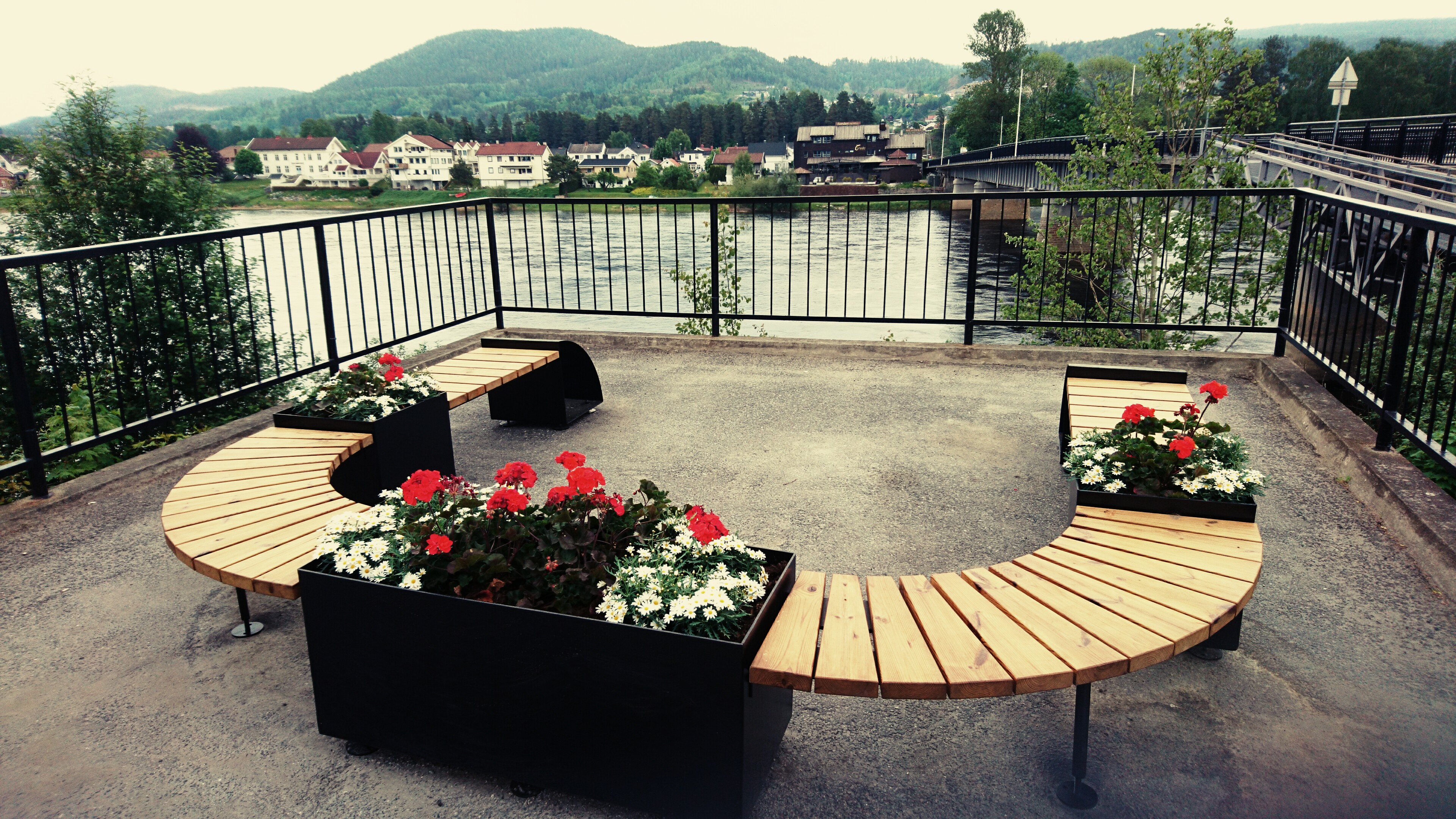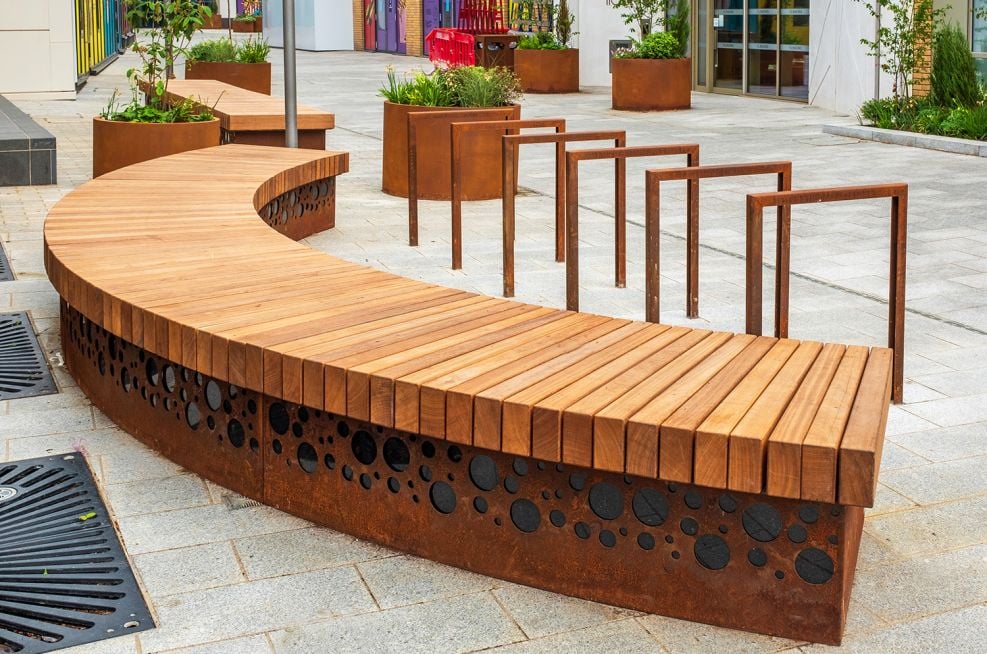We create and manufacture exterior/interior design details. More then eight years making outdoor furniture/small architekture and inside art details from any kind of metal.

Predicting the future of small-town architecture exteriors involves considering several trends and factors that may influence the design and aesthetics of buildings in smaller communities. While it's challenging to predict specific developments, here are some potential directions for the future of small-town architecture exteriors:
Sustainable Design:
The emphasis on sustainability and environmental consciousness is likely to continue. Small-town architecture may see an increased use of eco-friendly materials, energy-efficient technologies, and green building practices.
Modern Vernacular Styles:
Architects might blend traditional vernacular styles with modern design elements. This fusion can result in buildings that reflect the historical context of the area while embracing contemporary aesthetics and functionality.
Technological Integration:
Small towns may incorporate smart technologies into their architecture, such as energy-efficient systems, smart lighting, and integrated communication networks. These technologies can enhance the overall efficiency and livability of the community.
Adaptive Reuse and Preservation:
The trend of repurposing existing structures for new uses is likely to continue. Adaptive reuse not only preserves the historical character of small towns but also promotes sustainable development.
Flexible and Multi-Use Spaces:
With an emphasis on maximizing limited space, small-town architecture may prioritize flexible and multi-use spaces. Buildings designed to serve multiple functions can adapt to changing community needs over time.
Community-Centric Design:
Architects may increasingly involve the local community in the design process. Participatory design approaches can result in buildings that truly reflect the desires and needs of the residents.
Resilient and Disaster-Resistant Design:
Given the increasing frequency of extreme weather events, small-town architecture may incorporate designs that enhance resilience and resistance to natural disasters, such as floods, hurricanes, or wildfires.
Innovative Materials:
Advances in materials science may lead to the development and use of innovative construction materials. These materials could offer improved durability, insulation, and aesthetic possibilities for small-town exteriors.
Human-Centric and Wellness Design:
Design principles that prioritize human well-being and wellness may become more prevalent. This could include integrating natural elements, optimizing natural light, and creating spaces that contribute to the overall health and happiness of the residents.
Artistic Expression:
Small-town exteriors may feature more artistic expression through murals, sculptures, and other public art installations. This can contribute to a vibrant and culturally rich community atmosphere.
Virtual and Augmented Reality Integration:
Virtual and augmented reality technologies may be used in the planning and visualization stages of small-town architecture projects. These technologies can help communities better understand and engage with proposed designs before construction begins.
It's important to note that the future of small-town architecture will be shaped by a combination of technological advancements, cultural shifts, environmental considerations, and the unique needs of each community. Architects and urban planners will play a key role in adapting to these changes while preserving the identity and charm of small towns.

The capabilities of small-town architecture can vary depending on factors such as local resources, budget constraints, and community needs. However, small-town architecture often focuses on creating functional and aesthetically pleasing structures that reflect the unique character and identity of the community. Here are some key aspects of small-town architecture capabilities:
Community-Centric Design:
Small-town architecture typically emphasizes designs that cater to the specific needs and preferences of the local community.
Architects may engage in community outreach and involve residents in the design process to ensure that the architecture reflects the community's values and aspirations.
Resource Sensitivity:
Small towns may have limited resources compared to larger urban areas. Therefore, architects often need to be resourceful and creative in their designs to make the most of available materials and budgets.
Sustainable and eco-friendly design principles may be integrated to minimize environmental impact.
Cultural and Historical Preservation:
Small towns often have a rich cultural and historical heritage. Architects may focus on preserving and incorporating these elements into new designs, helping to maintain a sense of continuity and identity.
Functional Adaptability:
Buildings in small towns may need to serve multiple purposes to maximize utility, especially in areas with limited space and resources.
Adaptive reuse of existing structures is common, where old buildings are repurposed for new functions rather than being demolished.
Scale and Proportion:
Small towns typically have a more intimate scale compared to larger cities. Architects need to consider the human scale, ensuring that buildings and public spaces are proportionate and harmonize with the surrounding environment.
Infrastructure Planning:
Small-town architecture often involves careful planning of essential infrastructure, such as roads, utilities, and public spaces, to accommodate the needs of the local population.
Local Materials and Crafts:
Using locally sourced materials and engaging local craftsmen can be a characteristic of small-town architecture. This not only supports the local economy but also adds a unique touch to the design.
Community Spaces:
Designing public spaces that encourage community interaction is a common goal. This may include parks, plazas, and communal gathering areas.
Resilience and Safety:
Small towns may face specific challenges, such as natural disasters. Architects may need to incorporate designs that enhance resilience and ensure the safety of residents.
Technology Integration:
While small towns may be traditional in many aspects, integrating modern technologies for energy efficiency, communication, and infrastructure management is increasingly important.
In summary, small-town architecture is characterized by a blend of functionality, community engagement, cultural preservation, and resource sensitivity. Architects in small towns often play a crucial role in shaping the built environment to meet the specific needs and aspirations of the local community.


